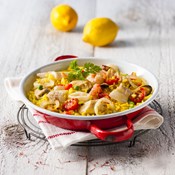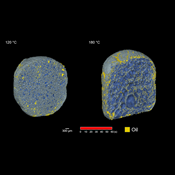


It is evident from research conducted by UCLL and KU Leuven that when assessing how (un)healthy a food product is, they attach more importance to the Nutri-Score than the nutritional value table on the packaging.
It is evident from research conducted by UCLL and KU Leuven that when assessing how (un)healthy a food product is, they attach more importance to the Nutri-Score than the nutritional value table on the packaging.
The researchers asked 398 adult participants to estimate how (un)healthy 20 Delhaize own brand products are in four categories: drinks, ice cream, dairy products and ready meals. The retailer provided product visuals for the project. 52% of the participants were women and the average age of the participants was 31.
Eye-tracking
The researchers used so-called eye-tracking technology for the nutritional value assessment of the 20 products. A special device detects the participants’ eye movements. “The data shows that the longer the participants looked at the Nutri-Score, the better they could assess the nutritional quality of the products. Visual attention to the nutritional value table had absolutely no impact on the assessment of the products” says researcher Saar Bossuyt of UCLL.
It was also evident that the age of the participants and familiarity with the Nutri-Score has a clear impact. “Older participants were less accurate in their assessment of the nutritional quality than younger participants. Consumers who are already familiar with the Nutri-Score were also more successful in correctly estimating the nutritional value of the products”, explains Bossuyt.
More difficult to assess products
The research also revealed that the significance of the Nutri-Score is greater for products for which it is more difficult to estimate the nutritional value: rice pudding, scampi in garlic butter or lemonade. “There are no straightforward characteristics for these”, says Bossuyt. “We suspect that these are primarily products in which the presence or absence of sugars or fats and the presence or absence of fruit/vegetables are not clearly visible. “For the scampi, it was underestimated how unhealthy the presence of garlic butter and the absence of fruit and vegetables makes this product. Possibly, many participants reasoned: “OK. scampi, not unhealthy”, without thinking any further about the overall features of this product.”
The large image of a lemon on the packaging of the lemonade also led many participants to forget that it is a lemonade that contains a lot of sugar: “it’s like you are drinking a piece of fruit”, thinks Bossuyt. Participants estimated rice pudding to be unhealthier than it is, perhaps because they forgot that it is by nature low in fat. This is an example of a lack of product knowledge.

“It is always advisable to maintain a critical perspective on your own products and adjust them to contemporary needs where necessary”, emphasises Marijke Adriaens, CEO of frozen food company Fribona. “For consumers, taste is still the main consideration. It is essential to work towards a product that is, above all, tasty and visually appealing.”...

Scientists from KU Leuven have discovered how oil penetrates snacks during and after the frying process. Recent research findings point to advanced frying techniques that reduce oil absorption, as well as innovative methods to limit oil uptake during the cooling phase. This paves the way for the development of healthier snacks without compromising...

Food companies are increasingly targeting a wider range of consumer groups. Speaking at an event organised by Fenavian, Julian Mellentin of New Nutrition Business said this strategy offers significant opportunities to respond to the diverse health needs and interests of today’s consumers. “Consumers enjoy both animal and plant-based proteins”, he...

Backed by financial partners, Start it @KBC is launching the accelerator programme Scale it Agro, aimed at scale-ups offering sustainable and innovative agricultural solutions for agriculture and horticulture businesses. Kjell Clarysse, programme director at Scale it Agro, goes into more detail.